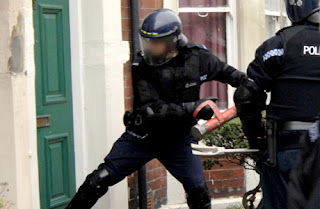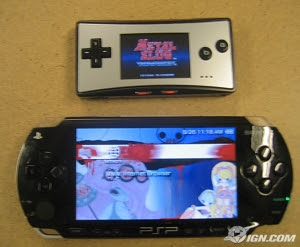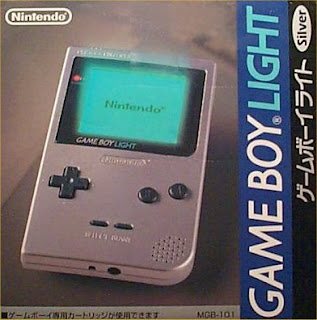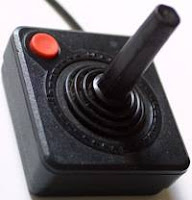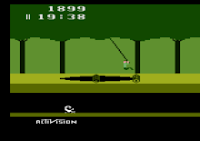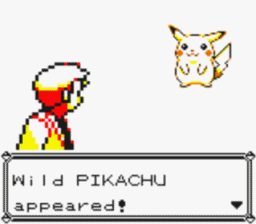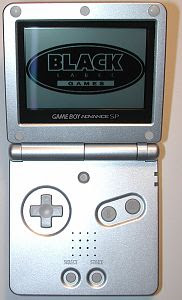Back in the good old days, there was a question that couldn't be answered: Should I buy a N64 or a PS1!
That answer remains even today, still unanswered! But, I've got an answer to it, and that is: "N64 vs. PS1... Heck, I bought both." Without further delaying, the is the review!
The N64 was my first console. Two weeks later, I bought a PS1. For a good gaming experience, you almost have to have both. They're like salt and pepper. The PS1 does what the N64 doesn't, and vice versa.
The Graphics: Much better than the PS1. Crisp, clear 3D that flows. However, Nintendo's use of cartridges rather than CDs made for some repetition. With the PS1, you didn't really have to worry about how many different graphics you have due to the large amount that the discs hold. The N64 could have more details, but more tiling in the textures. Still, if there is a game out for both systems I would always recommend the N64 version. For example: Tony Hawk's Pro Skater 2. I have it for the N64, and have played it for PS1. In the PS1 version, everything looked pixilated. Some of that may be because I have compared it to the N64 version, but it almost got in the way of playing.
 The Games: Some people say that the PS1 owners missed out on N64 games. Others say N64 owners missed out on PS1 games. I bought both. With an N64, you miss out on Metal Gear Solid, Final Fantasy VII, Xenogears, and Spyro to name a few. With a PS1, you miss out on Zelda: Ocarina of Time, Goldeneye, Super Smash Bros., Mario Kart 64, and many more. What's more, there were different companies working for each side. Squaresoft, Capcom, and Enix were working on the PS1, while Rare, Nintendo, and Hal were making games for the N64. There were so many classics for each side, you can't really draw a line.
The Games: Some people say that the PS1 owners missed out on N64 games. Others say N64 owners missed out on PS1 games. I bought both. With an N64, you miss out on Metal Gear Solid, Final Fantasy VII, Xenogears, and Spyro to name a few. With a PS1, you miss out on Zelda: Ocarina of Time, Goldeneye, Super Smash Bros., Mario Kart 64, and many more. What's more, there were different companies working for each side. Squaresoft, Capcom, and Enix were working on the PS1, while Rare, Nintendo, and Hal were making games for the N64. There were so many classics for each side, you can't really draw a line. The Genres: The N64 often seemed limited in this area. It had a good deal of 3D Platformer/Adventure games, racing games, sports games, but maybe two fighters and RPGs (Zelda was an action RPG, not turn-based). Some games the N64 had that the PS1 didn't were First Person Shooters and some simulation games (e.g. Pilotwings 64). However, the PS1 had all of the RPGs and fighting games. Final Fantasy, Xenogears, Legend of Dragoon, Tekken, and Marvel vs. Capcom were a few. They shared racing games, 3D platformer/adventure games, and sports games.
The Genres: The N64 often seemed limited in this area. It had a good deal of 3D Platformer/Adventure games, racing games, sports games, but maybe two fighters and RPGs (Zelda was an action RPG, not turn-based). Some games the N64 had that the PS1 didn't were First Person Shooters and some simulation games (e.g. Pilotwings 64). However, the PS1 had all of the RPGs and fighting games. Final Fantasy, Xenogears, Legend of Dragoon, Tekken, and Marvel vs. Capcom were a few. They shared racing games, 3D platformer/adventure games, and sports games.Cartridges: Do not scratch, No load times, Smaller
CDs: More space, Compatible with later systems, Cheaper
In my opinion, the PS1 just looked cooler. It was kind of old school, being gray and boxy. The N64 looked cool too, but not as cool. Some N64 games rely on memory paks, while some just save in-cartridge. To use a rumble pak, you have to take out the memory pak and put it in. With the PS1, you only needed one memory card, which would hold a lot. I have two N64 memory paks because my first one filled up. Then again, I have 15 N64 games vs. six PS1 games (for now, because can't find them, to rare).
 The PS1 controllers didn't have the analog stick like the N64 until later. When they did, the controllers were a little better. Two analog sticks, one D-Pad, with vibration built in. The moving parts were in the controller handles, which felt more natural than the heavy rumble pak of the N64. However, the N64 had the Z button, which was like a trigger. It also had the C-Pad, which usually controlled the camera (the L and R buttons on the PS1 did that). I'm not sure why they put a D-Pad on the N64 controller. The only game that uses it exclusively instead of the analog stick is Kirby 64.
The PS1 controllers didn't have the analog stick like the N64 until later. When they did, the controllers were a little better. Two analog sticks, one D-Pad, with vibration built in. The moving parts were in the controller handles, which felt more natural than the heavy rumble pak of the N64. However, the N64 had the Z button, which was like a trigger. It also had the C-Pad, which usually controlled the camera (the L and R buttons on the PS1 did that). I'm not sure why they put a D-Pad on the N64 controller. The only game that uses it exclusively instead of the analog stick is Kirby 64.Wrapping it up: There were some great games for each system. I got them instead of a PS2, Xbox or GameCube because the games are still awesome and cost half as much. So, call me wishy-washy, but I think they're equal.







